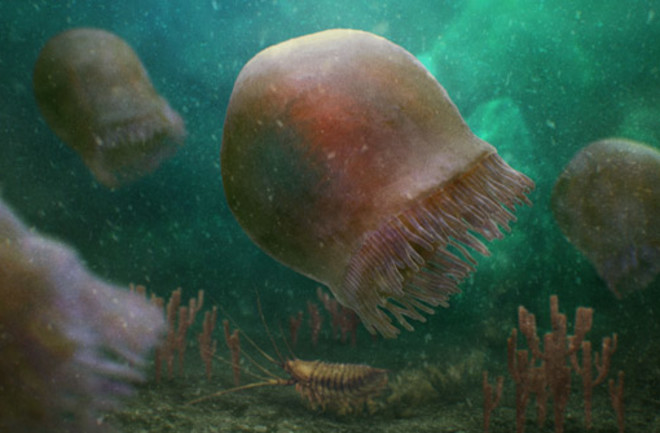In the ancient era of animal life, about 500 million years ago, the ocean had limited predators. However, a peculiar shrimp-like creature with twin claws ruled as the top predator, growing up to 6 feet in length. Alongside it, small chaetognath worms with spiny mouths would snap at their prey. But now, these predator ranks have grown slightly more diverse. Recent fossil findings have confirmed that even jellyfish, a more familiar predator, were lurking in the oceans half a billion years ago. The newly discovered species, Burgessomedusa phasmiformis, comes from the Royal Ontario Museum and the fossils were initially found in the 1980s and ’90s by Desmond Collins, a former director at the museum. These fossils, originating from the Burgess Shale deposit in the Canadian Rockies, are truly extraordinary. Remarkably delicate, they are made up of 95 percent water. Collins and his colleagues were able to recover 182 jellyfish fossils, which could grow up to 8 inches in length and had over 90 tentacles. These features classify the ancient creature as a medusozoan, a clade that still exists today and includes renowned species such as the Portuguese man o’ war and the moon jelly. Although jellyfish are believed to be one of the earliest groups of animals to have evolved, they are incredibly difficult to find in the Cambrian fossil record. The Cambrian period witnessed a remarkable explosion of diversity in the oceans, while the land remained barren and devoid of life. Underwater, the oxygen levels skyrocketed, allowing for the evolution of more complex life forms. Among these species, predators like B. phasmiformis were quite rare, and the jellyfish likely faced limited competition. At some point during its life, a sudden mudslide buried the jellyfish, along with numerous other organisms, preserving them for future generations. Jean-Bernard Caron, the Richard Ivey Curator of Invertebrate Paleontology at the museum, expressed his astonishment at finding such delicate creatures preserved in rock layers on the mountain tops. He also noted that this discovery adds yet another extraordinary lineage of animals to the Burgess Shale collection, documenting the evolution of life on Earth. During the Cambrian period, when the land was barren, heavy erosion caused mudslides that swept into the ocean. In what is now the Burgess Shale, the mud flowed into a great basin and buried many early animals. Over millions of years, the movement of tectonic plates dramatically shifted the location, eventually elevating it to its present position. From 1909 to 1967, explorers and scientists began classifying the site, which contained fossils of various early arthropods, a phylum that includes modern-day shrimp, lobsters, crabs, and insects. The total expanse of the fossil-rich bed is around 500 feet in height and 6 feet in depth.
